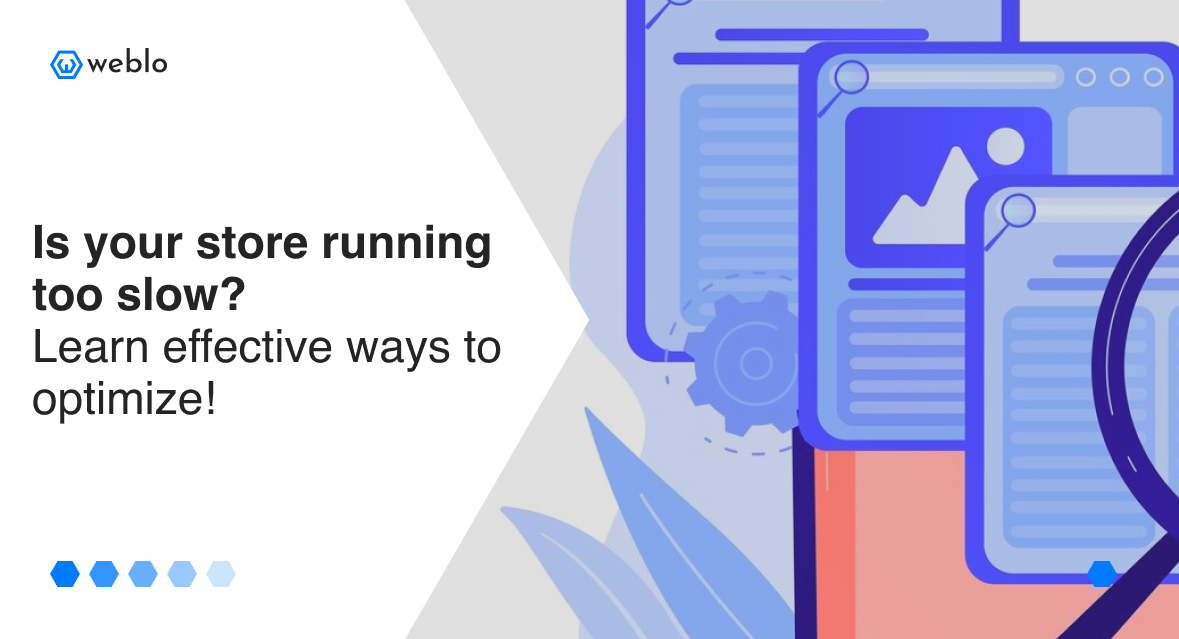Is your store running too slow? The most effective ways to optimize!
In today’s world, the speed of your website is one of the key elements that affect the success of your online store. Slow page loading is not only an annoyance for users – it is a real loss of potential customers, and as a result, a decrease in conversion. In an industry where every second counts, the speed of your store can decide whether a customer decides to make a purchase or leaves the site, looking for an alternative from the competition.
If your store is too slow, it’s time to act! Here are the most effective ways to optimize your site to help speed up your performance and increase customer satisfaction.
1. Choose fast and reliable hosting
Hosting is the foundation that every website is built on. No matter how well-optimized your store is, if you’re running a slow or overloaded server, you won’t see good results.
What can you do?
• Choose e-commerce-ready hosting with dedicated servers or VPS (Virtual Private Server) options that provide more resources.
• Opt for hosting with built-in performance optimizations, such as CDN (Content Delivery Network) servers.
2. Optimize your images
Product images are essential to e-commerce, but if they’re not optimized properly, they can slow down your site significantly. Large, uncompressed image files are one of the most common causes of slow load times.
How to optimize images?
• Image compression: Use lossless compression tools like TinyPNG or JPEGoptim to reduce file sizes.
• Next-generation formats: Consider using image formats like WebP, which offer smaller file sizes while maintaining quality.
• Lazy loading: Implementing lazy loading means that images only load when a user scrolls to them, significantly speeding up initial load times.
3. Minify scripts and CSS files
JavaScript and CSS files are essential for a site to function properly, but too many of them can slow down your store’s loading time. Large and unoptimized scripts can burden users’ browsers, leading to performance degradation.
What can you do?
• Minify files: Use minification tools to remove unnecessary characters, spaces, and comments from your JavaScript and CSS files. Tools like UglifyJS or CSSNano can help with this task.
• Combine files: Combining multiple JavaScript and CSS files into one can reduce the number of HTTP requests, which speeds up your page load time.
4. Use CDN (Content Delivery Network) technology
A CDN speeds up the loading of websites by distributing content across multiple servers located in different locations around the world. This ensures that the user receives data from the closest server, which significantly reduces the time it takes to load the page.
CDN benefits:
• Increased loading speeds for users from different regions of the world.
• Relief from the main server, which reduces the risk of the page being overloaded and slowed down.
5. Keep your code clean and plugins lightweight
Every additional code and plugin you install on your store affects the speed of your site. Too many unnecessary elements can cause slowdowns, especially if the plugins are poorly optimized or conflict with each other.
How to optimize your code?
• Regularly review and remove unused plugins and code elements that are no longer needed.
• Choose lightweight, well-optimized plugins that have good user reviews.
• Check the compatibility of plugins with other elements of the site to avoid conflicts.
6. Implement page cache
Caching is a technique that allows you to store a copy of a page in the browser or server’s memory. This allows users who visit your store for the next time to load the page much faster, because some elements are already saved on their devices.
Types of caches worth implementing:
• Browser cache: Allows you to store elements of the page on users’ devices, which speeds up subsequent visits.
• Server cache: Stores copies of dynamically generated pages, which reduces the load on the server and speeds up access to data.
7. Optimize your database
In online stores, especially those with a large number of products, the database can grow to a significant size. A poorly optimized database can slow down the performance of the site, especially when the number of queries increases.
How to optimize the database?
• Regular cleaning: Delete unnecessary data, such as old transactions, unused products, or inactive user accounts.
• Indexing: Implementing indexes in the database will help speed up queries and, consequently, the performance of the entire store.
8. Invest in AMP (Accelerated Mobile Pages)
More and more users are making purchases on mobile devices. AMP technology is a solution designed to speed up page loading on smartphones and tablets, which improves the mobile user experience and increases conversion rates.
AMP benefits:
• Significantly reduces page loading times on mobile devices.
• Improved positioning in Google search results, which can contribute to an increase in organic traffic.
9. Monitor performance and test regularly
The final but crucial step in optimizing your store speed is regular testing and monitoring of performance. Use tools like Google PageSpeed Insights, GTmetrix, or Pingdom to see how fast your store is and which elements can be optimized.
Why is it worth testing regularly?
• Store performance can change as new products, features, or updates are added. Regular testing allows you to react quickly to slowdowns.
• Testing allows you to better understand which elements of your site are putting the most strain on your server and how to optimize them.
Summary
The speed at which your online store loads has a direct impact on your revenue and customer satisfaction. Whether you have a small store or a large e-commerce enterprise, optimizing your site speed should be a priority. By using the above tips, you will not only improve the performance of your site, but also increase conversions!
Remember, at Weblo we have many years of experience in optimizing online stores. If you need help speeding up your e-commerce, we are happy to help!




